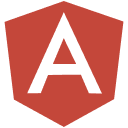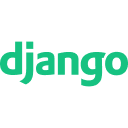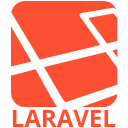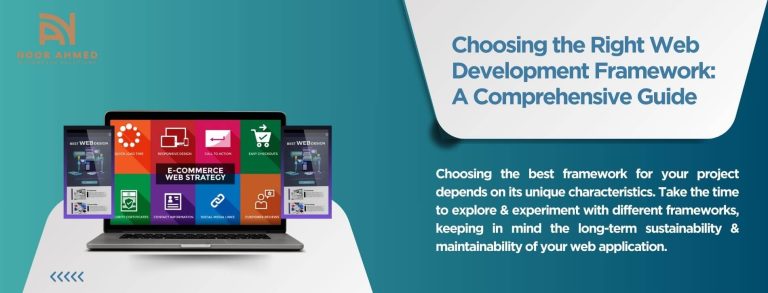In the fast-paced world of web development, choosing the right framework is a critical decision that can significantly impact the success of your project. With a plethora of options available, each boasting unique features and advantages, navigating through the choices can be overwhelming. This comprehensive guide aims to simplify the process, providing you with the insights and considerations necessary to make an informed decision.
Understanding Web Development Frameworks
Before delving into the selection process, let’s establish a clear understanding of what a web development framework is. In essence, a framework is a pre-built, structured set of tools, libraries, and conventions designed to facilitate the development of web applications. It acts as a foundation, providing a structured environment for developers to build upon, reducing the need to reinvent the wheel for every project.
Key Considerations:
-
Project Requirements:
Before choosing a framework, it’s essential to define the specific requirements of your project. Consider factors such as the complexity of the application, scalability, performance, and the type of web development (front-end, back-end, or full-stack). Understanding your project’s needs will help narrow down the options to frameworks that align with your goals.
-
Programming Language:
Frameworks are typically associated with specific programming languages. Your choice of language may be influenced by factors such as developer expertise, project requirements, and ecosystem support. Popular programming languages for web development include JavaScript (Node.js, React, Angular), Python (Django, Flask), Ruby (Ruby on Rails), and PHP (Laravel).
-
Community and Support:
A vibrant community is a valuable asset when working with a web development framework. An active community ensures ongoing support, regular updates, and a wealth of resources such as documentation, tutorials, and third-party plugins. Evaluate the community size and engagement level of a framework to gauge its long-term viability.
-
Learning Curve:
Consider the learning curve associated with each framework, especially if you or your team are new to it. Some frameworks prioritize simplicity and ease of use, while others may offer more advanced features at the cost of a steeper learning curve. Strike a balance that aligns with your team’s expertise and the project’s timeline.
Types of Web Development Frameworks
-
Front-end Frameworks:
Front-end frameworks focus on the user interface (UI) and user experience (UX) aspects of web development. They provide tools and libraries to streamline the creation of responsive and visually appealing interfaces. Popular front-end frameworks include React.js, Angular, and Vue.js.
-
Back-end Frameworks:
Back-end frameworks are responsible for server-side logic and data processing. They offer tools to handle database interactions, routing, authentication, and more. Examples of back-end frameworks include Express.js (for Node.js), Django (for Python), Ruby on Rails (for Ruby), and Laravel (for PHP).
-
Full-stack Frameworks:
Full-stack frameworks encompass both front-end and back-end components, providing an all-in-one solution for web development. This can lead to increased development speed and a cohesive architecture. Some popular full-stack frameworks include MEAN (MongoDB, Express.js, Angular, Node.js) and MERN (MongoDB, Express.js, React, Node.js).
Popular Web Development Frameworks
1. React.js:
- Type: Front-end

- Language: JavaScript
- Key Features: Component-based architecture, virtual DOM, JSX syntax
- Community: Large and active community, abundant third-party libraries
React.js is widely used for building interactive user interfaces. Its component-based architecture allows for modular development, making it easier to manage and scale complex UIs.
2. Angular:
- Type: Front-end

- Language: TypeScript
- Key Features: Two-way data binding, dependency injection, modular structure
- Community: Robust community support, maintained by Google
Angular, developed and maintained by Google, is known for its comprehensive features and structured approach to front-end development. It’s suitable for building large-scale and enterprise-level applications.
3. Django:
- Type: Full-stack (back-end)

- Language: Python
- Key Features: ORM, admin interface, security features
- Community: Active community, follows the “batteries-included” philosophy
Django is a high-level Python web framework that emphasizes rapid development and clean, pragmatic design. It comes with an integrated admin interface and follows the DRY (Don’t Repeat Yourself) principle.
4. Express.js:
- Type: Full-stack (back-end)

- Language: JavaScript (Node.js)
- Key Features: Lightweight, flexible, middleware support
- Community: Large and active community, used with Node.js
Express.js is a minimal and flexible Node.js web application framework that provides a robust set of features for web and mobile applications. It is often used in conjunction with other libraries and frameworks to create scalable and maintainable applications.
5. Laravel:
- Type: Full-stack (back-end)

- Language: PHP
- Key Features: Eloquent ORM, Blade templating engine, Artisan CLI
- Community: Growing community, excellent documentation
Laravel is a PHP framework that prioritizes developer-friendly syntax and conventions. It includes features like Eloquent ORM for database management and the Artisan command-line interface for automating tasks.
Decision-Making Process
Now that you have an overview of different types of frameworks and some popular examples, let’s break down the decision-making process into actionable steps.
1. Define Project Requirements:
Start by clearly defining the goals and requirements of your project. Consider factors such as the type of application, scalability needs, and any specific features or functionalities required.
2. Choose the Right Type of Framework:
Based on your project requirements, decide whether a front-end, back-end or full-stack framework is most suitable. If your project involves both client and server-side development, a full-stack framework may be the ideal choice.
3. Assess Language Compatibility:
Consider the programming language that aligns with your team’s expertise and the project’s needs. If you have a preference for a specific language or if your project requires compatibility with existing systems, this should heavily influence your decision.
4. Evaluate Community Support:
Check the community size and engagement level of the frameworks you are considering. A strong community ensures ongoing support, regular updates, and a wealth of resources that can be invaluable during development.
5. Examine Learning Curve:
Assess the learning curve associated with each framework and evaluate whether it aligns with your team’s skill level. A framework that is easy to learn and use can lead to quicker development, especially if time is a critical factor.
6. Consider Scalability:
Think about the scalability requirements of your project. Some frameworks are better suited for small to medium-sized applications, while others are designed to handle the complexities of large-scale and enterprise-level projects.
7. Explore Documentation and Tutorials:
Review the documentation and available tutorials for each framework. Well-documented frameworks make it easier for developers to understand and leverage the features, leading to more efficient development.
8. Analyze Performance:
Consider the performance characteristics of the frameworks you are evaluating. Look for benchmarks, case studies, or real-world examples that demonstrate the performance of each framework in different scenarios.
9. Factor in Security:
Security is paramount in web development. Evaluate the security features and best practices supported by each framework. A framework with built-in security measures can save you from potential vulnerabilities down the line.
10. Test with Prototypes:
If possible, create small prototypes or proof-of-concept projects using the frameworks you are considering. Hands-on experience will provide valuable insights into the development process, ease of use, and overall suitability for your project.
Conclusion
Choosing the right web development framework is a pivotal decision that can significantly impact the success of your project. By carefully considering factors such as project requirements, programming language, community support, and scalability, you can make an informed choice that aligns with your team’s skills and project goals.
Remember that there is no one-size-fits-all solution, and the best framework for your project depends on its unique characteristics. Take the time to explore and experiment with different frameworks, keeping in mind the long-term sustainability and maintainability of your web application. With a well-informed decision, you’ll be well on your way to building robust, scalable, and high-performance web applications.

